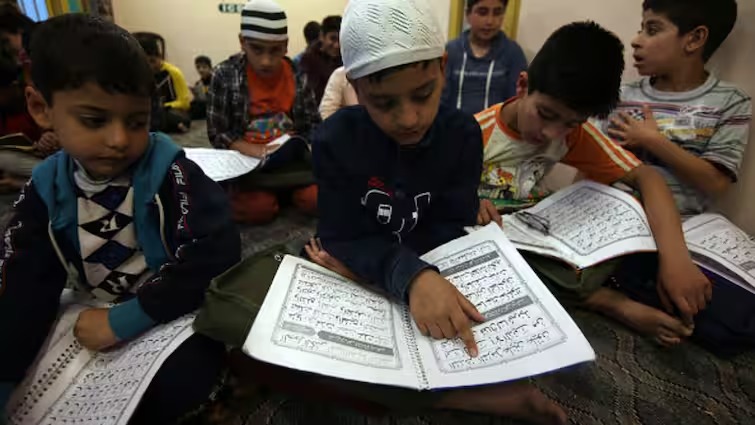
UP Madrasa News: In an application filed in the Supreme Court in the Uttar Pradesh Madrasa case, the National Commission for Protection of Child Rights has said that the education given in Madrasas is not comprehensive. Therefore, it is against the right to education. Many such things are also being taught here, which are preventing children from adopting a liberal attitude towards other religions and are pushing them towards fanaticism.
NCPCR has filed a petition in the Supreme Court against the Allahabad High Court's decision to declare the UP Madrasa Act unconstitutional, on hearing which the division bench of Justice Vivek Chaudhary and Justice Subhash Vidyarthi has directed the state government to accommodate the madrasa students in regular schools recognized under the UP Primary and High School and Intermediate Education Board.
The Indian Express has given a detailed report on the madrasas running in the country, in which all kinds of information from the history of the madrasas to education and funds has been given.
History of Madrasas
According to this report, Madrasa is an Arabic word used for an educational institution. In the beginning of Islam, education was imparted in mosques, but after the 10th century, Madrasas got a separate identity as institutions imparting religious and secular education. The earliest evidence of Madrasas is found in Khorasan and Transoxania related to modern eastern and northern Iran, Central Asia and Afghanistan. Residential facilities were also provided for students in large Madrasas.
A large number of madrasas
are run in Uttar Pradesh. As of 2018-19, there were 24,010 madrasas in India, of which 19,132 were recognised madrasas and the rest 4,878 were unrecognised. This information was given by the then Minority Affairs Minister Mukhtar Abbas Naqvi in the Rajya Sabha on February 3, 2020. 60% of the country's madrasas were in Uttar Pradesh, of which 11,621 were recognised, and 2,907 were unrecognised. Rajasthan is at number two, while many states and union territories, including Delhi, Assam, Punjab, Tamil Nadu and Telangana, had no recognised madrasas.
Madrasas are of two categories
. Madrasas are run in two categories in India. One of these is Madrasa Darse Nizami which runs on donations from people. These madrasas are not bound to follow the state school education curriculum. The second is Madrasa Darse Aaliya which is recognized by the state's Madrasa Education Board. More than 20 states have their own Madrasa Boards, which are governed by the state. The teachers and other officials in recognized madrasas are appointed by the state government. Education in these madrasas is similar to school and higher education.
Madrassa students study up to 10th to become a Maulvi, 12th for Alim, graduation for Kamil, and master's degree for Fazil. Charitable Madrasa Dars-e-Nizami imparts education in Arabic, Urdu and Persian medium, while Madrasa Dars-e-Aaliya teaches NCERT books. Most madrassa boards in the country follow the NCERT curriculum. Subjects like mathematics, science, Hindi, English and sociology are taught in them.
Funds are given by the state governments
Recognized madrasas are funded by the state government, which are provided financial assistance under the Central Government's Scheme for Providing Quality Education to Madrasas/Minorities (SPEMM). These include two categories: Scheme for Providing Quality Education in Madrasas (SPQEM) and Infrastructure Development of Minority Institutions (IDMI). In April 2021, SPEMM was transferred from the Ministry of Minority Affairs to the Ministry of Education.
--Advertisement--

 Share
Share



